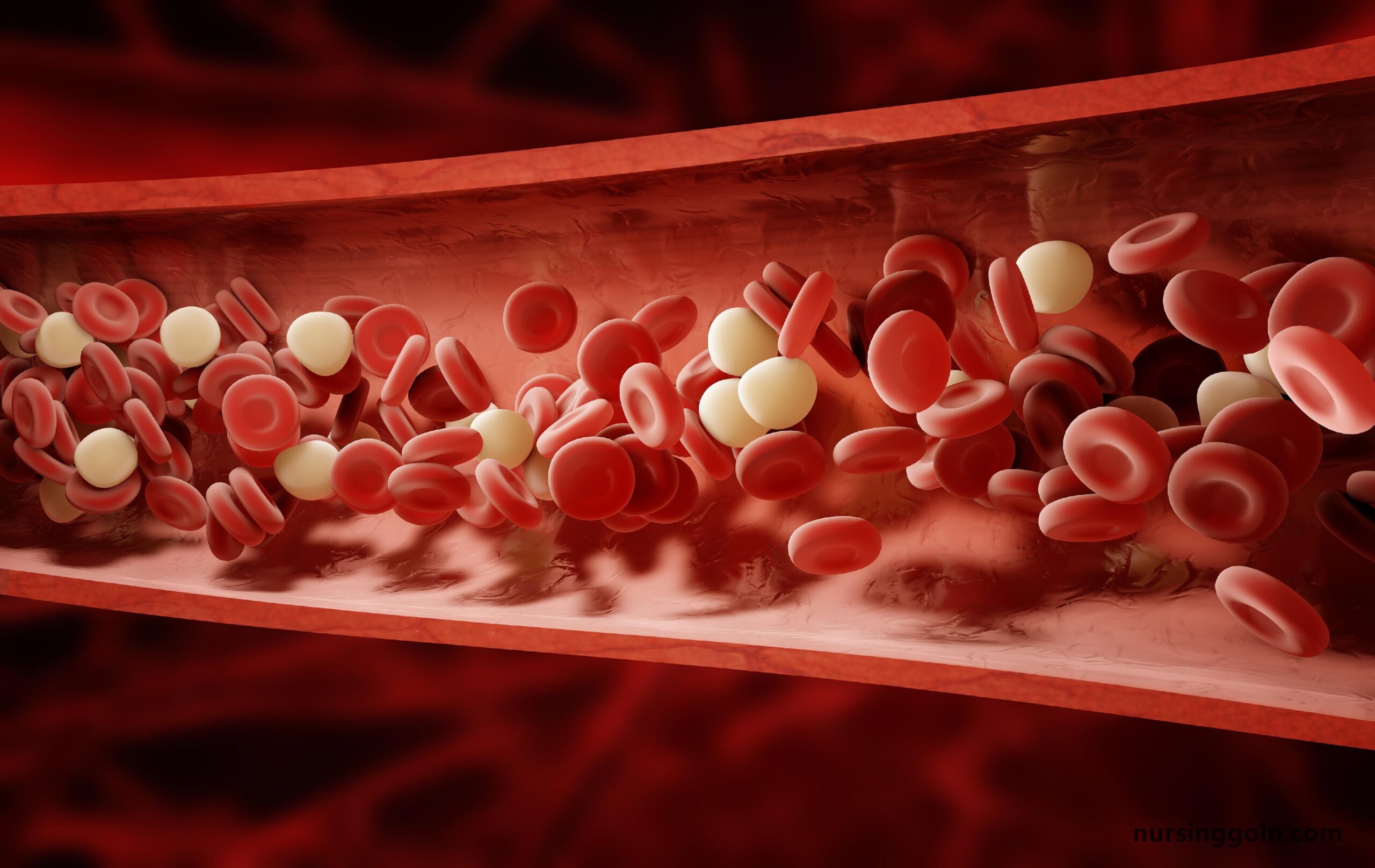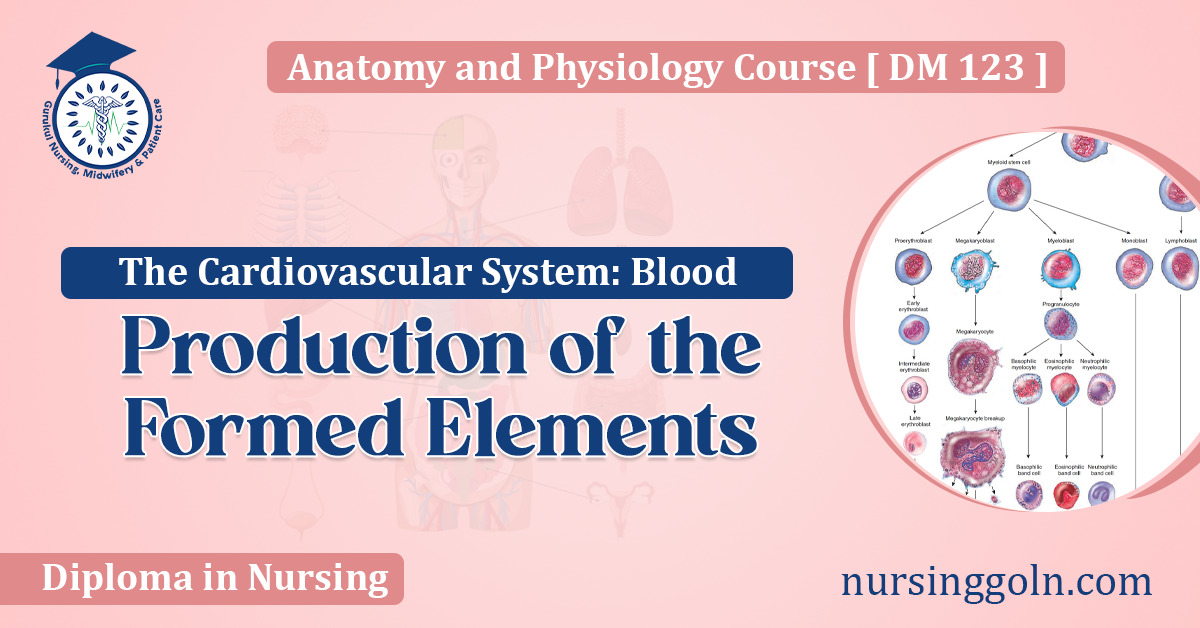Today our topic of discussion is ” Production of the Formed Elements “. The cardiovascular system’s life-sustaining fluid, blood, is a treasure trove of components, each with distinct and vital functions. Among these are the ‘formed elements’ — red blood cells, white blood cells, and platelets — which play roles ranging from oxygen transportation to immune defense. But where do these elements originate, and how are they produced throughout one’s life? In this deep dive, we’ll explore the processes that generate these essential components.

Production of the Formed Elements – The Cardiovascular System: Blood
1. Introduction: A Glimpse into Hematopoiesis
The process by which the formed elements of blood are produced is known as hematopoiesis. It’s a complex process, involving multiple stages of development, maturation, and differentiation, ensuring a steady supply of the billions of blood cells needed daily.
2. The Hematopoietic Stem Cell: The Progenitor of All Blood Cells
At the core of hematopoiesis is the hematopoietic stem cell (HSC), a multipotent progenitor cell residing mainly in the bone marrow. These cells have two defining characteristics:
- Self-renewal: They can undergo numerous cycles of cell division while maintaining their undifferentiated state.
- Differentiation: They can give rise to specialized cells, ultimately producing all the formed elements.
3. The Bone Marrow: Factory of Blood Cells
Most hematopoiesis occurs in the bone marrow, a spongy tissue found in the central cavities of bones. Two types of bone marrow exist:
- Red Bone Marrow: Active in blood cell production. Found in the pelvis, vertebrae, cranium, ribs, sternum, and scapulae.
- Yellow Bone Marrow: Primarily fat cells, can revert to red bone marrow when necessary.
4. Pathways of Differentiation: From One to Many
HSCs, through sequential stages of differentiation, give rise to all blood cells. This process is regulated by a plethora of growth factors and cytokines.
4.1 Erythropoiesis: The Birth of Red Blood Cells
The pathway leading to red blood cells is erythropoiesis. Triggered by the hormone erythropoietin (EPO), it involves:
- Proerythroblast: The earliest committed cell.
- Basophilic, Polychromatic, and Orthochromatic Erythroblasts: Stages of RBC development with decreasing cell size and increasing hemoglobin concentration.
- Reticulocyte: Immature RBC released into the bloodstream, which matures into a fully functional RBC.

4.2 Leukopoiesis: White Blood Cell Production
The production of leukocytes involves various pathways depending on the cell type.
- Granulocytes (Neutrophils, Eosinophils, Basophils): Originating from a myeloblast precursor.
- Monocytes: Derived from monoblasts.
- Lymphocytes: T and B cells differentiate from common lymphoid progenitors. B cells mature in the bone marrow, while T cells migrate to the thymus for maturation.
4.3 Thrombopoiesis: The Creation of Platelets
Platelets, unlike other formed elements, are fragments of larger cells called megakaryocytes. Thrombopoietin, a hormone produced by the liver, stimulates megakaryopoiesis (megakaryocyte production) and thrombopoiesis (platelet production).
- Megakaryoblast: The earliest precursor in the platelet-producing lineage.
- Promegakaryocyte: Undergoes DNA replication without cell division.
- Megakaryocyte: A large, multi-lobed cell. It extends projections into blood vessel channels, shedding fragments that become platelets.

5. Regulation of Hematopoiesis
A fine-tuned balance is maintained in blood cell production through:
- Hormonal Regulation: Hormones like EPO and thrombopoietin directly stimulate the production of specific cells.
- Cytokines: Local hormone-like molecules that regulate cell differentiation and proliferation.
- Feedback Mechanisms: Like the drop in oxygen levels stimulating EPO release, ensuring increased RBC production.
6. Clinical Significance and Aberrations
Dysfunctions in hematopoiesis can lead to diseases like:
- Anemias: Deficient RBC production.
- Polycythemia: Excessive RBC production.
- Leukemias: Cancerous conditions creating a high number of immature or abnormal leukocytes.

7. Conclusion
The orchestrated production of the formed elements showcases the body’s incredible ability to sustain life. The journey from a single hematopoietic stem cell to the myriad of specialized cells coursing through our veins is not just biologically intriguing but a testament to the intricacies of human physiology. Understanding these processes holds the key to addressing hematological disorders and furthering medical advancements.
Read more:
